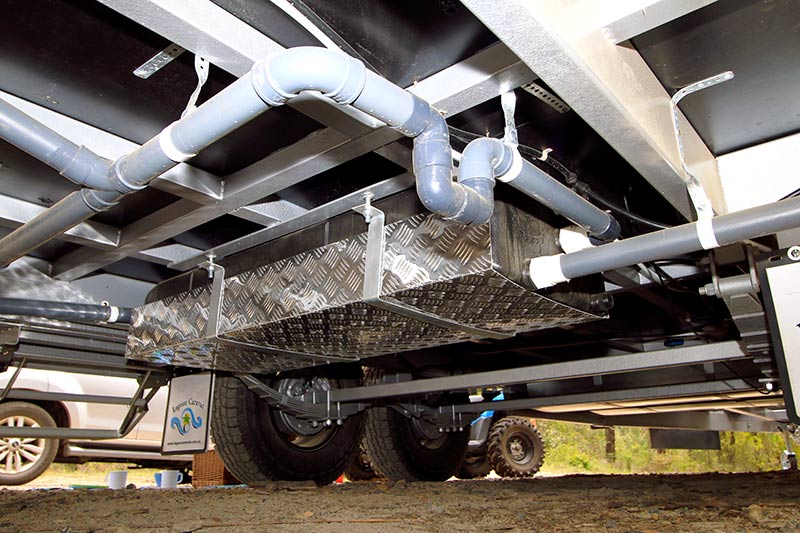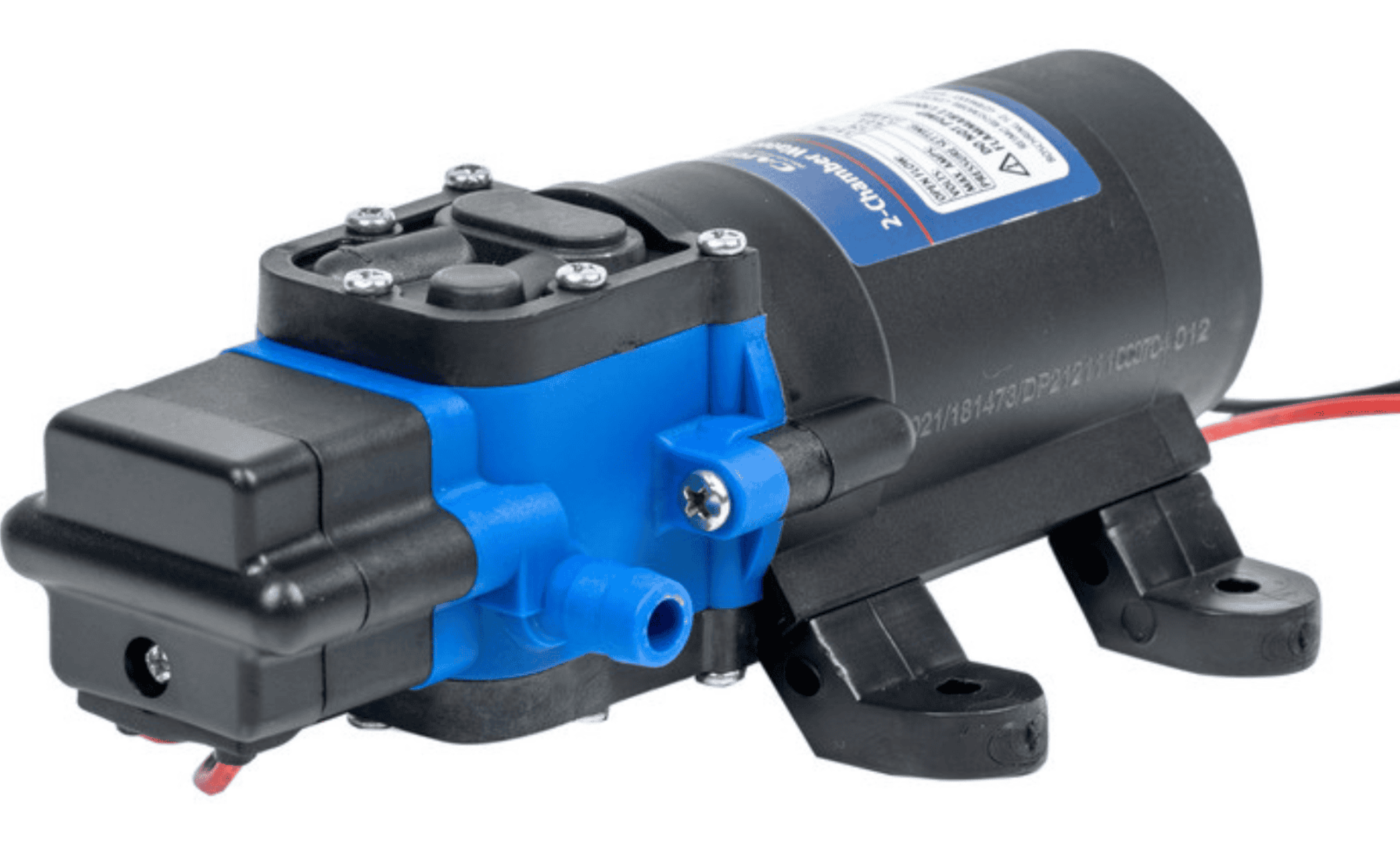Unlock Freedom and Sustainability: Your Guide to Camper Van Greywater Tanks
The allure of converting a van into a personalised home on wheels continues to captivate adventurers and those seeking a more sustainable lifestyle. This movement towards mobile living emphasises self-sufficiency and a deeper connection with the environment. While the focus often lands on exciting aspects like solar power and cosy interiors, a crucial element for responsible and comfortable van life is the management of wastewater. Enter the greywater tank – an often-underappreciated component that plays a vital role in both environmental stewardship and extending your off-grid capabilities. This guide will delve into the world of camper van greywater tanks, explaining what they are, their benefits, the components involved, the variety of options available, and essential considerations for regulations and maintenance.
What is Greywater in a Camper Van Conversion?
In the context of camper van conversions, greywater is specifically defined as the gently used water that drains from your sinks and shower . This includes water from washing dishes in the kitchen sink, brushing your teeth in the bathroom sink, and taking a shower. It’s important to clearly distinguish greywater from black water, which is the wastewater from the toilet containing sewage. These two types of wastewater require separate management due to their differing levels of contamination.
While greywater doesn’t contain faecal matter, it’s not simply clean water either. It typically includes traces of soap, food particles, grease, hair, toothpaste, and various cleaning agents. Because of these contents, even though it’s less hazardous than black water, greywater is still considered non-potable and can carry bacteria and other contaminants. Therefore, responsible handling and disposal are essential to prevent environmental pollution and potential health hazards .
It’s worth noting that some van dwellers, particularly those prioritising a minimalist approach or traveling in specific environments, may opt for a system where greywater is drained directly from the van . This method often involves using a hose to direct the water into a portable container like a bucket or, in some cases and where permitted, onto the ground. However, this approach necessitates a strong commitment to environmental responsibility, including the exclusive use of biodegradable and eco-friendly soaps and adherence to strict local regulations. For most camper van conversions aiming for self-sufficiency and broader travel capabilities, a dedicated greywater tank offers a more reliable and environmentally sound solution.
The Undeniable Benefits of a Greywater Tank
Installing a greywater tank in your camper van offers a multitude of advantages, primarily falling under the umbrellas of environmental responsibility and enhanced self-sufficiency.
Environmental Champion
A primary benefit of a greywater tank is that it enables the proper and responsible disposal of wastewater. By collecting used water in a tank, you can then empty it at designated dump stations, which are specifically designed to handle wastewater safely. This prevents the contamination of natural environments such as soil and water sources, which can occur if greywater is dumped indiscriminately onto the ground or into roadside drains . Many regions have regulations against such practices, and responsible travellers understand the ethical imperative to protect the often-fragile ecosystems they visit.
Furthermore, having a greywater tank encourages the use of environmentally friendly products . Knowing that your wastewater will be collected and potentially treated reinforces the importance of using biodegradable soaps and detergents that minimise harm to the environment. This conscious choice contributes to a more sustainable way of traveling and living on the road, actively participating in the preservation of the natural beauty that often inspires the van life journey.
Boosting Your Self-Sufficiency
Beyond environmental considerations, a greywater tank significantly enhances your camper van’s self-sufficiency. By providing a dedicated storage space for wastewater, it allows for extended periods of off-grid travel without the constant need to locate disposal facilities . This convenience is particularly valuable for those who enjoy exploring remote areas or prefer to avoid the constraints of traditional campsites.
Having an onboard system for collecting greywater means you don’t have to worry about immediately dealing with used water after each shower or dishwashing session. This is especially beneficial during longer trips or when campsites with readily available disposal facilities are not part of your itinerary. A greywater tank minimises the frequency of needing to interrupt your journey to find and empty wastewater, allowing you to stay longer in your chosen locations and fully immerse yourself in the experience of van life. This aspect of water management directly contributes to the overall sense of freedom and flexibility that makes camper van conversions so appealing .
Inside the System: Components of a Camper Van Greywater Tank
A typical camper van greywater tank system comprises several key components working together to collect, store, and allow for the disposal of used water.
The Tank Itself
The heart of the system is the tank itself, which is typically made from durable and corrosion-resistant materials like polyethylene plastic. This material is chosen for its ability to withstand the rigors of a mobile environment, including temperature fluctuations and potential impacts . Greywater tanks are constructed as holding basins designed to temporarily store the wastewater. They feature at least one inlet to receive water from the sinks and shower, an outlet for drainage, and often a vent to allow for airflow and prevent a vacuum from forming as water drains, which could impede the flow. Some tanks may also include level sensors to indicate how full the tank is.
The Plumbing Network
Connecting your sinks and shower to the greywater tank is a network of plumbing. This typically involves pipes made from materials like rigid or flexible PVC, PEX, or various types of hose. These pipes are joined using a variety of fittings such as elbows, tees, adapters, and bulkhead fittings, ensuring secure and leak-proof connections. An important component of the plumbing is the trap, either a traditional P-trap or a more compact Hepvo valve, which is installed in the drain line to prevent odours from the greywater tank from entering the living space . The plumbing system needs to be carefully designed to ensure proper drainage and effectively manage potential odours, contributing to a comfortable and sanitary environment inside the van.
Drainage Mechanisms
To empty the greywater tank, a drainage system is essential. This typically includes a drain valve, such as a ball valve or gate valve, located at the tank’s outlet . When it’s time to empty the tank, a drainage hose is connected to the outlet port . For larger, fixed tanks, this is often a standard campervan sewer hose that connects to a designated dump station . Smaller, portable tanks may use a simpler garden hose for emptying. The drainage system must be easily accessible and reliable, ensuring compatibility with standard disposal facilities for convenient and responsible emptying .
Choosing the Right Vessel: Types and Sizes of Greywater Tanks
When it comes to selecting a greywater tank for your camper van conversion, you’ll generally encounter two main types: portable and fixed tanks. Each offers distinct advantages and disadvantages depending on your specific needs and build.
Portable vs. Fixed Tanks
Portable Greywater Tanks: These tanks are typically smaller and designed for easy removal and emptying. Their primary advantages include a lower initial cost and a simpler installation process, often requiring just placement under the sink . Emptying is straightforward – you simply detach the tank and manually carry it to a disposal point , making them a good starting point for simpler conversions or those with limited space. However, portable tanks have a smaller capacity, requiring more frequent emptying, and they can take up valuable interior storage space.
Fixed Greywater Tanks: These tanks offer a more integrated and often higher-capacity solution. They are typically mounted underneath the van, freeing up precious interior space. Emptying is more convenient with a fixed tank, usually involving opening a valve and connecting a hose to a dump station. While offering greater capacity and convenience, fixed tanks generally have a higher initial cost and require a more complex installation, often involving plumbing through the van floor. They may also have an impact on the van’s ground clearance. Fixed tanks are ideal for full-time van dwellers or those planning longer off-grid adventures where a larger wastewater capacity is beneficial.
Common Sizes and Capacity Considerations
The appropriate size for your greywater tank depends on several factors, including the number of occupants, your water usage habits (such as showering frequency and dishwashing), and the capacity of your fresh water tank (as the greywater tank is often sized to be slightly smaller) .
Typical portable greywater tank sizes range from around 4 to 7 gallons (like Aqua-Tainers) up to 5 to 20 litres. Fixed tanks generally start around 10 gallons and can go up to 30 gallons or more for smaller camper vans . Larger vans may have significantly bigger greywater tanks, ranging from 40 to over 95 gallons.
To help you determine the best size for your needs, consider the following table:
| Tank Type | Typical Capacity | Suitable For | Considerations |
|---|---|---|---|
| Portable | 4-20 gallons/liters | Short trips, solo travelers or couples, budget-conscious, limited space | Requires manual emptying, smaller capacity |
| Fixed | 10-30+ gallons | Longer trips, families, frequent showering, more self-sufficiency | Higher cost, more complex installation, potential impact on ground clearance |
Ultimately, choosing the right size involves balancing your available space, budget, desired level of self-sufficiency, and anticipated water usage.
Navigating the Rules of the Road: Greywater Disposal Regulations in the UK and Europe
Understanding and adhering to greywater disposal regulations is crucial for responsible van travel in the UK and Europe.
UK Regulations
In the UK, the general guidance emphasises the disposal of greywater at designated sites, which are commonly found at campsites and service areas . Discharging greywater into roadside drains or directly into natural water sources is generally discouraged and can be illegal due to the potential for environmental harm. While some campsites might have specific policies, including designated disposal points or, in certain situations, requests to use greywater for watering hedgerows, this should not be considered a general practice. The overarching principle in the UK is to ensure responsible disposal at appropriate facilities to protect the environment.
European Regulations
Across Europe, regulations regarding greywater disposal can vary from country to country. However, similar to the UK, many European campsites and service areas provide designated greywater disposal points. There is also an increasing emphasis on using eco-friendly detergents, especially if you are considering disposing of greywater in less formal settings, where permitted and appropriate. Several apps and online resources are available to help locate designated disposal points throughout Europe. The overall trend in Europe aligns with the UK’s approach, promoting regulated disposal at designated locations and encouraging environmentally conscious practices.
General Advice
Regardless of your location in the UK or Europe, it is always best practice to thoroughly research local regulations and the specific rules of any campsites you plan to visit before your trip. This proactive approach will ensure you are complying with all local guidelines and contributing to responsible and sustainable van travel.
Keeping Your System Sweet: Essential Greywater Tank Maintenance Tips
Proper maintenance of your camper van greywater tank is essential for preventing unpleasant odors and ensuring the system functions correctly for years to come.
Preventing Odors
One of the most common concerns with greywater tanks is the potential for odours. To minimise this, it’s crucial to empty the tank frequently to prevent the build-up of bacteria. Rinsing the tank with clean water after each emptying can also help remove residual build-ups . Many van owners also use specialised greywater tank treatments, either chemical or natural solutions like a mixture of vinegar and baking soda or even regular dish soap, to help control odours. A simple yet effective practice is to scrape dishes thoroughly before washing them to minimize the amount of food particles entering the tank.
Ensuring Proper Functioning
To ensure your greywater system functions properly, avoid pouring grease or large food particles down the drain, as these can lead to clogs . Periodic deep cleaning of the tank using specialized camper or caravan tank cleaners or DIY solutions like hot water and dish soap or a diluted bleach solution is recommended to remove stubborn build-up and maintain hygiene. Regularly check all plumbing connections and the tank itself for any signs of leaks. If you plan to travel in cold climates, remember to winterize your greywater tank to prevent freezing and potential damage.
Conclusion
Installing a greywater tank in your camper van is a significant step towards responsible and sustainable travel. It not only allows for the proper disposal of wastewater, minimising your environmental impact, but also enhances your self-sufficiency, enabling longer and more convenient off-grid adventures. By understanding the components, types, regulations, and maintenance involved, you can make informed decisions for your van conversion and enjoy the freedom of the open road with a clear conscience. Prioritising responsible wastewater management ensures that the beauty of the landscapes we explore can be enjoyed by generations to come.



